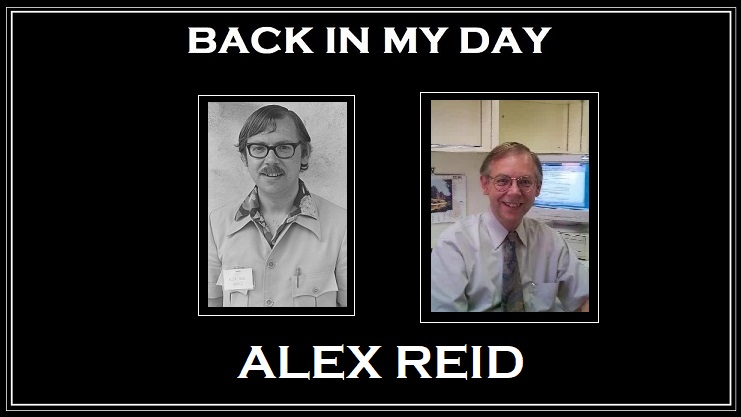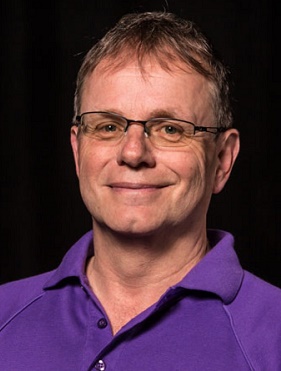‘Back in My Day’ is an Information Age series profiling some of our older ACS members and Information Age readers speaking about their early days in IT.
This week, we speak with Alex Reid, aged 80, from Perth, Western Australia.
Where did it all start for you?
I was born in Nottingham in the UK and my family migrated to Perth when I was 14 as mum was in search for a warmer climate to help manage her asthma.
It was a great move for all of us and as I continued my schooling here, my favourite subject became maths; I loved the precision, detail, and logical flow associated with the discipline and how the results were entirely predictable once you were given all the conditions. Just like programming.
Having achieved excellent results in maths in my final year at school, it was the natural choice as my major area of study in my science degree at UWA (University of Western Australia).
How did that lead to computing?
During my studies I managed to obtain a cadetship to undertake vacation work at the WRE (Weapons Research Establishment) in Salisbury, South Australia.
At the first session they lined us all up and asked: “What are you studying?”
When I said “maths” I was delighted to be put into the group where the computer was – at that time there were no computers in Western Australia.
I first programmed the WREDAC (the second computer in Australia), using paper tape input and output. Then I moved up to their IBM 7090 with punched card input and printed output and programmed in Fortran.
After graduating, I was offered a job as a programmer with WRE and moved to Adelaide for a couple of years.
What did that role involve?
My first program was published internally in November 1961 and our work involved tracking the flight path of defensive weapons, including Ikara, a ship-launched anti-submarine rocket which was widely deployed by the Australian Navy.
On one occasion the computer modelling demonstrated that the predicted flight path of the rocket could end up clipping the rails on the side of the ship and those rails were quickly redesigned.
So, with your computing career having been launched, what happened next?
I wanted to move back to Perth to be closer to family and obtained a programming job with what’s now the ABS (Australian Bureau of Statistics). I ended up working on the 1966 Census.
At that time, the ABS had set up a Control Data 3200 mainframe in every state, with the more powerful Control Data 3600 being housed in Canberra.
As part of that role I was posted to Canberra for 15 months to work on the 3600.
My work included programming in assembly language and Fortran, and I created a system that could automatically search and extract Census data, creating tables according to criteria such as state, age, gender, etcetera.
And I’m glad to say that they’re still using an upgraded version of the table generator now.
How long did you stay with the ABS?
For around five years, until I heard that the UWA (University of Western Australia) had acquired a DEC (Digital Equipment Corporation) PDP-6, which was the first time-shared computer to be installed anywhere in the world.
This amazing machine didn’t use punched cards, but instead had teletype terminals operating at 10 characters per second, connected over phone lines, giving every user the impression that they had the computer entirely to themselves.
Output was still done by printing. There weren’t any computer screens yet, but it was so exciting that I applied for a job with UWA and joined them in 1969.
How did the career at UWA play out?
It started out really well and I was there for a staggering 24 years, beginning as a programmer and ending up as Director of the University Computing Service, which counted government agencies, private companies, and other educational institutions among its clients, in addition to servicing UWA.
One of my early initiatives there was to write my own Fortran compiler, which could run student programs much more quickly than the regular compiler and actually gave meaningful error messages.
It also kept on processing after an error, rather than crashing out, providing more useful feedback to students and we even released it to schools, where kids would program with pre-punched cards in which segments, known as “chads”, were pushed out using a paperclip.
Later on, in a two-year project, I was able to program a unique self-operated library loan system that I named “Loanly” (pronounced loan-lee).
Previously, loans had been entirely manual, wasting large amounts of library staff time but under Loanly, each book contained a pre-punched card, and each student had a punched card ID, and these were fed into a reader by the student at checkout to borrow the book.
It was the first automated self-serve lending system deployed anywhere in the world and was featured in the Australian Computer Bulletin of February 1978.
Now being in the university sector, were you able to do any teaching?
Absolutely, I’ve always been passionate about engaging people of all ages in the wonders of computing.
To facilitate this I’ve been constantly upskilling and undertook the Diploma of Computation at UWA, which covered areas including computer hardware and logic design, mathematics and statistics, programming, optimisation, and control.
A year later I began teaching some of these subjects to UWA students and teaching has always been a big part of my career.
Beyond this I established the first professional development activity for the Australian Computer Society in Western Australia in the seventies and ran more than a dozen seminars with guest speakers.
How did your time at UWA finish up?
As director of the University Computing Service, I was managing a budget of $12 million per year, looking after more than 100 staff, and providing the Vice Chancellor with strategic advice relating to the use of information technology, but with the increasing availability of personal computers there were those who began to question the need for a central computing facility.
A decision was then made to abolish my position, as the value of maintaining the facility to support research and teaching was no longer recognised.
While I was devastated by that short-sighted decision, it worked in my favour because I was then able to secure the role of IT Director at Oxford University Computing Services in England.
So, in 1993, my wife and I packed our bags and moved to Oxford.
Was Oxford what you expected?
Definitely, and so much more.
The historical campus was magnificent and with a budget of £6 million per year, and more than 120 staff, we provided all infrastructure including the university-wide network (which was the largest private network in Europe) as well as a wide range of IT services in a highly distributed environment.
While at Oxford, with generous government funding, I was able to set up a hierarchical file storage system that would automatically back up everybody’s desktops overnight and safely store the valuable data created by university researchers.
The system cost more than £500,000 and had a capacity of 20TB, which is what you could fit onto an external hard drive for around $1,000 these days.
During my time at Oxford I completed an MBA in Technology Management remotely through Deakin University and my lecturer commented that he learnt a lot about computers from having me as a student.
In 2000, out of the blue, UWA approached me to return to my old role, which had been re-established, and with ageing parents and emerging grandchildren in Perth, it was an offer too good to refuse.
How did things go back in Perth?
Very well.
UWA wanted me to develop policies and strategies for central IT, which I did for four years before retiring from full-time employment in 2005.
At that point I joined AARNet (the Australian Academic and Research Network) in a part-time paid role, to establish an eResearch support group, and stayed on for the next 15 years.
This involved facilitating internet connectivity among researchers and expediting massive file transfers via CloudStor, with astronomers being among the biggest users.
I’d actually been among those who first set up AARNet back in 1989 and back then it was the only Internet service provider in Australia, so taking on the eResearch role felt like coming home.
Looking back, I’d always fancied the idea of fully retiring by 55 but realised I just couldn’t let it go.
Are you still working these days?
Yes, but only in a voluntary capacity.
I’m the editor of the monthly national eResearch newsletter (oriented towards helping researchers use computing in their work) and am Program Chair for the annual eResearch Australasia Conference.
I also still have an honorary position at UWA as a professorial fellow, teach IT Ethics, and am on the ACS Ethics Committee.
Right now, I’m writing a history of computing in Western Australia and, together with two colleagues, have almost finished a book about a major Western Australian inventor that few people know about.
Called “Intuitive Genius: The Cryptographic Achievements of Monte Sala”, it’s about a brilliant inventor from Italy, who migrated to Western Australia after WWII and created a world-renowned encryption device that he then sold to SWIFT (the Society for Worldwide Interbank Financial Telecommunications).
Looking back, is there anything else you’d like to share?
Another special time for me was doing consulting work for UNESCO (United Nations Educational, Scientific and Cultural Organisation) to support the Middle East while I was in England.
We worked with Lebanon, Syria, Palestine, and Egypt to help them establish network connections between their universities.
The only country that succeeded was Syria and I’m glad to say that, despite the civil war, their university network is still running.
It’s a wonderful feeling to extend support to those in need and this is something I hope to do for another 20 years at least.










